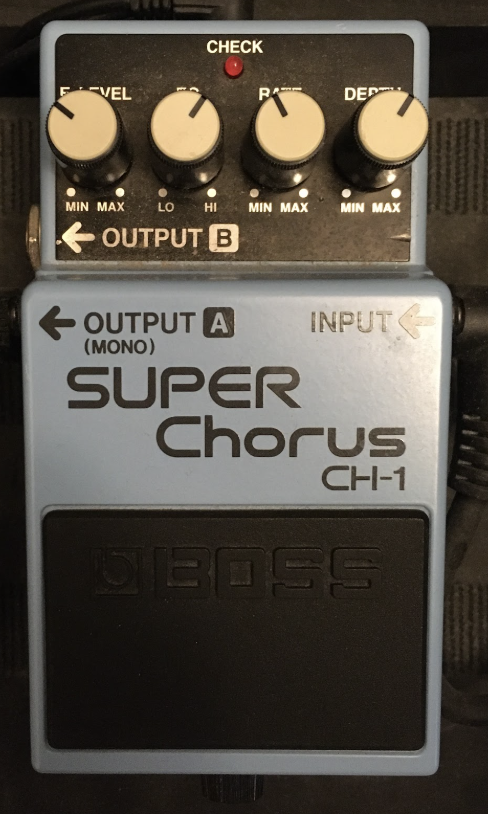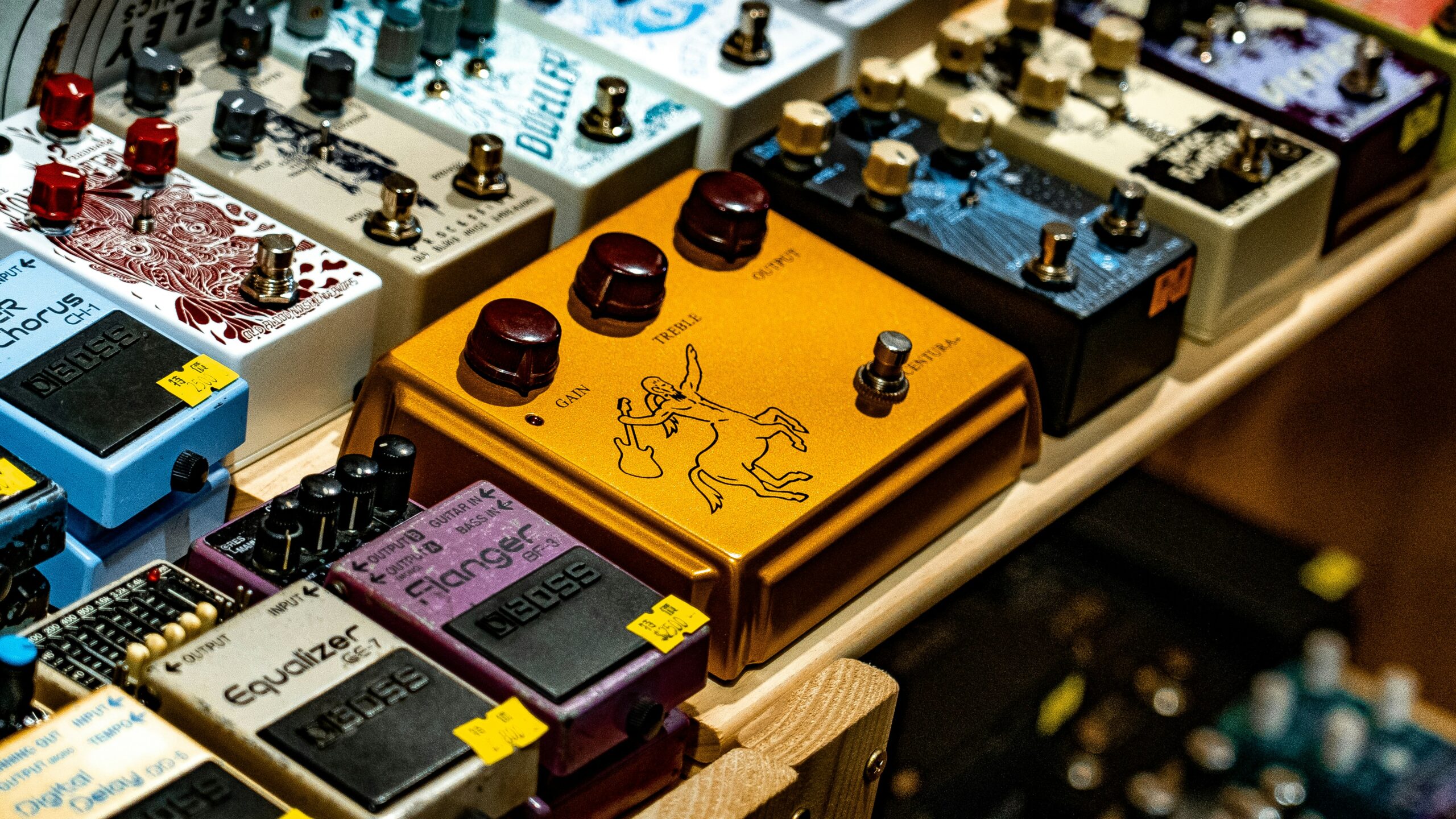I’ve always treated my chorus pedal like a Crock-Pot: set it and forget it.
I got my most recent chorus pedal, a Boss CH-1, a number of years ago. I found a decent enough setting, turned the effect way down for fear of bringing the 1980s back to life, and left it at that.
But lately I’ve been wondering…how can I actually make use of this as a tool? What kind of tones might I be able to get from it that I’m missing out on?
To answer those questions, I had to go on a journey to discover more about the chorus effect, how it began, what it does, and how to dial in the right tones.
Here’s what I learned.
A brief history of chorus effects
The idea of chorus as an electronic effect dates back to 1975. This was the year Roland introduced the Jazz Chorus amplifier.
The Jazz Chorus had two speakers, and when the onboard chorus effect was enabled, one of the speakers would be slightly delayed and modulated, while the other continued to play the unadulterated sound.
The number of guitar-centric chorus pedals in the marketplace has skyrocketed, but they all perform in basically the same way.
Interestingly, the amp was designed for keyboards and synths, but it soon found a home among guitarists as well.
In fact, it only took until the next year, 1976, before the chorus circuit from the Jazz Chorus was installed into a pedal, the Boss CE-1.
Since then, the number of guitar-centric chorus pedals in the marketplace has skyrocketed, but they all perform in basically the same way.
Understanding what a chorus pedal does
Chorus pedals are part of a larger group of effects known as “modulation effects.” These effects all slightly delay and alter a copy of your guitar’s sound in some way. (Note: For any effect in your signal chain, your guitar’s normal sound is called the “dry” signal; the altered copy is called the “wet” signal.)
In short, a chorus pedal takes the sound of your guitar, copies it, delays the copied version by a few dozen milliseconds, and modulates it before playing it back alongside the dry signal.
This process was designed to mimic multiple human voices singing together (hence the name, “chorus”). Since humans aren’t perfect, when a group sings together, even in unison, slight natural delays and waverings occur, which our ears perceive as making the sound bigger and fuller.
(That’s also why a choir sounds like a group of people singing together and not just one person singing extra loud.)
A chorus pedal takes the sound of your guitar, copies it, delays the copied version by a few dozen milliseconds, and modulates it before playing it back alongside the dry signal.
It’s this natural variation, leading to a fuller sound, that chorus pedals are designed to emulate.
They do this via two primary settings: rate and depth.
- Rate affects the modulation. Turn the rate down, and the wavering gets slower. Turn it up, and it gets faster.
- Depth controls how much of the effect you get. A low depth will be subtler, while with a high depth, the chorus effect will be quite noticeable.
All chorus pedals will have at least these two settings, although they may call them different names.
Other common settings include level and tone (or EQ).
- Level allows you to dial in how much of the modulated sound you hear relative to the unmodulated sound.
- Tone determines how dark or bright the modulated sound is.
Dialing in a killer chorus tone
Now that you understand the nomenclature, it technically shouldn’t be hard to dial in a sound you like.
If you want faster warble, turn the rate up. If you want a darker sound, turn the tone down. And so on.
You can get a wide variety of sounds out of most chorus pedals. And you can even use more than one at a time if you’re feeling feisty.
But, of course, in the real world it’s not always that simple. Sometimes we don’t know what kind of sound we want until we hear it. And for some of us, our ears may not be trained enough to recognize the subtle differences a chorus pedal can sometimes produce.
It turns out you can get a wide variety of sounds out of most chorus pedals. And you can even use more than one at a time if you’re feeling feisty.
But rather than trying to explain all of your options, in my research I ran across a video that samples a range of options when it comes to using a chorus pedal, and even how you can mimic a chorus effect if you don’t have a dedicated pedal.
The guitarist in the video dials in some really cool — and very useable — sounds, so be sure to check it out.
As for me, I’m still fine-tuning how I use my CH-1. (Like most guitarists, I’m never satisfied with my tone.) But at least now I know what I’m doing, rather than relying on randomly twisting knobs as was my previous habit.
So how about you? How do you use your chorus pedal? Did you know what all the knobs did, or, like me, was it an effect shrouded in mystery? Let us know in the comments.

